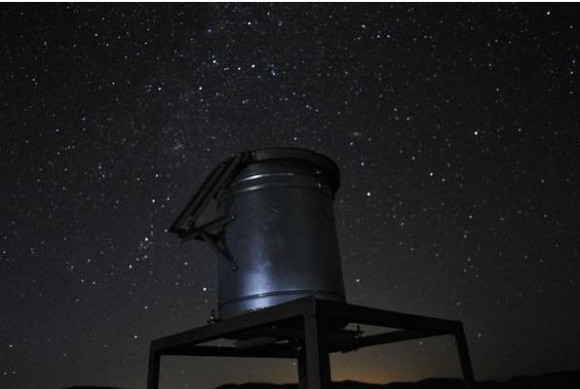Caption: Lake Baikal. Credit: SeaWiFS Project NASA/Goddard Space Flight Center and ORBIMAGE
Construction has just begun at the Tunka Valley near Lake Baikal, Siberia, Russia on an observatory that, once completed, will consist of an array of up to 1,000 detectors covering 100 square kilometres. Its size will allow scientists to investigate cosmic rays — the space radiation emitted from gamma rays and heavier nuclei — which are accelerated to energies higher than those achieved in the Large Hadron Collider. With the new observatory, called HiSCORE (Hundred Square-km Cosmic ORigin Explorer), scientists hope to solve the mystery of the origins of cosmic rays, and perhaps probe dark matter too
It was a hundred years ago that Austrian-American physicist Victor Hess first discovered that radiation was penetrating Earth’s atmosphere from outer space. The problem has been to track down their origin, as cosmic rays consist of charged particles and are therefore deflected in interstellar and intergalactic magnetic fields. The use of simple, inexpensive detector stations, placed several hundred meters apart, makes it possible to instrument a huge area, allowing scientists to investigate cosmic rays within an energy range from 100 TeV up to at least 1 EeV.
Cherenkov detector in front of the starry sky. Image: Tunka Collaboration
Cosmic rays cannot penetrate our atmosphere but each detector can observe the radiation created when cosmic rays hit the Earth’s upper atmosphere, causing a shower of secondary particles that travel faster than the speed of light in air, producing Cherenkov radiation in the process. This light is weak, but can be detected on the surface of the earth with sensitive instruments like HiSCORE’s photomultiplier tubes.
Cherenkov radiation can be used to determine the source and intensity of cosmic rays as well as to investigate the properties of high-energy astronomical objects that emit gamma rays like supernova remnants and blazars. The wide field of view also allows HiSCORE to monitor extended gamma ray emitting structures such as molecular gas clouds, dense regions or large scale structures such as star forming regions or the galactic plane.
HiSCORE can also be used for testing theories about Dark Matter. A strong absorption feature is expected around 100 TeV. Examination can give information about the absorption of gamma rays in the interstellar photon fields and the CMB. If the absorption is less than expected, this might indicate the presence of hidden photons or axions. Also, the decay of heavy supersymmetric particles might be detectable by HiSCORE. The data will improve as the facility grows over the years. By 2013-14 the area will be around one square kilometre, and over 10 square kilometres by 2016.
HiSCORE is a joint project between the Institute for Nuclear Research of the Russian Academy of Sciences in Moscow, Irkutsk State University in Siberia and Lomonosov Moscow State University – as well as DESY, the University of Hamburg and the Karlsruhe Institute of Technology in Germany. HiSCORE also hopes to collaborate with the Pierre Auger observatory in Argentina.
Find out more about HiSCORE at the project’s website



The area of this experiment in the end will reach 100 square kilometres. However the area of the Pierre Auger Observatory (
http://en.wikipedia.org/wiki/Pierre_Auger_Observatory ) is 3000 square kilometres. Why do you say this is the largest cosmic ray experiment ever?
HiSCORE? What a thought-provoking choice for an acronym.
And who said physics experiments had to have cheesy names?
That underlined statement is incorrect. Actually, it is when cosmic rays impact planetary bodies in the Solar System that they cause the emission of gamma rays, and also when cosmic rays from space interacting with the upper-atmosphere produce a cascade of secondary particles and gamma rays with positive and negative electron pairs.
Though objective of expanded knowledge is impressive, the appearance of the detectors certainly are not. Form of elegance, none to see. The image Looks more like a simple metal bucket resting on an old iron bed-frame, albeit, one set-up for the advanced purpose of collecting the fall of cosmic rain. Well, as long as they work to increase the reservoir of known information with valuable new data flows!